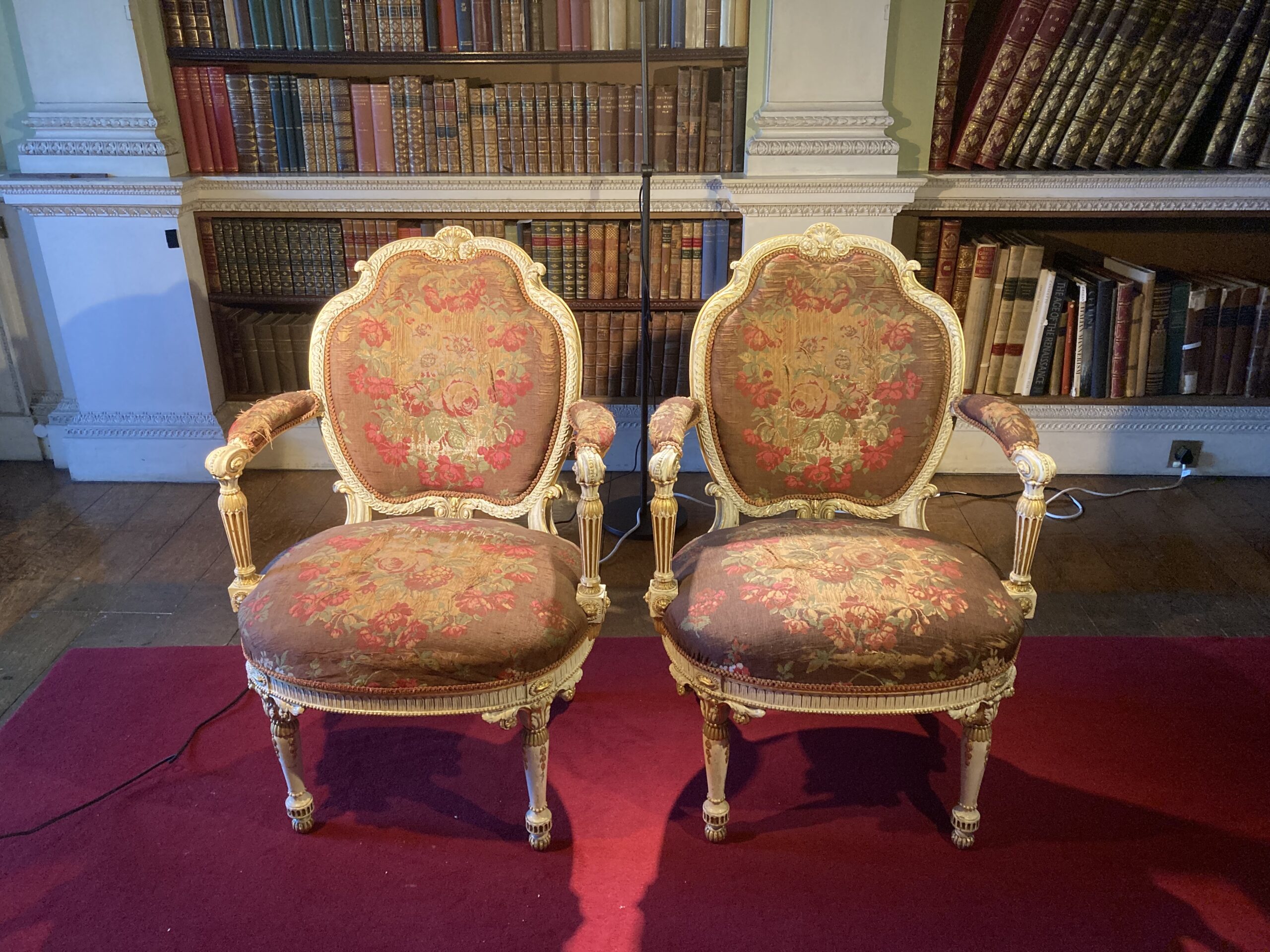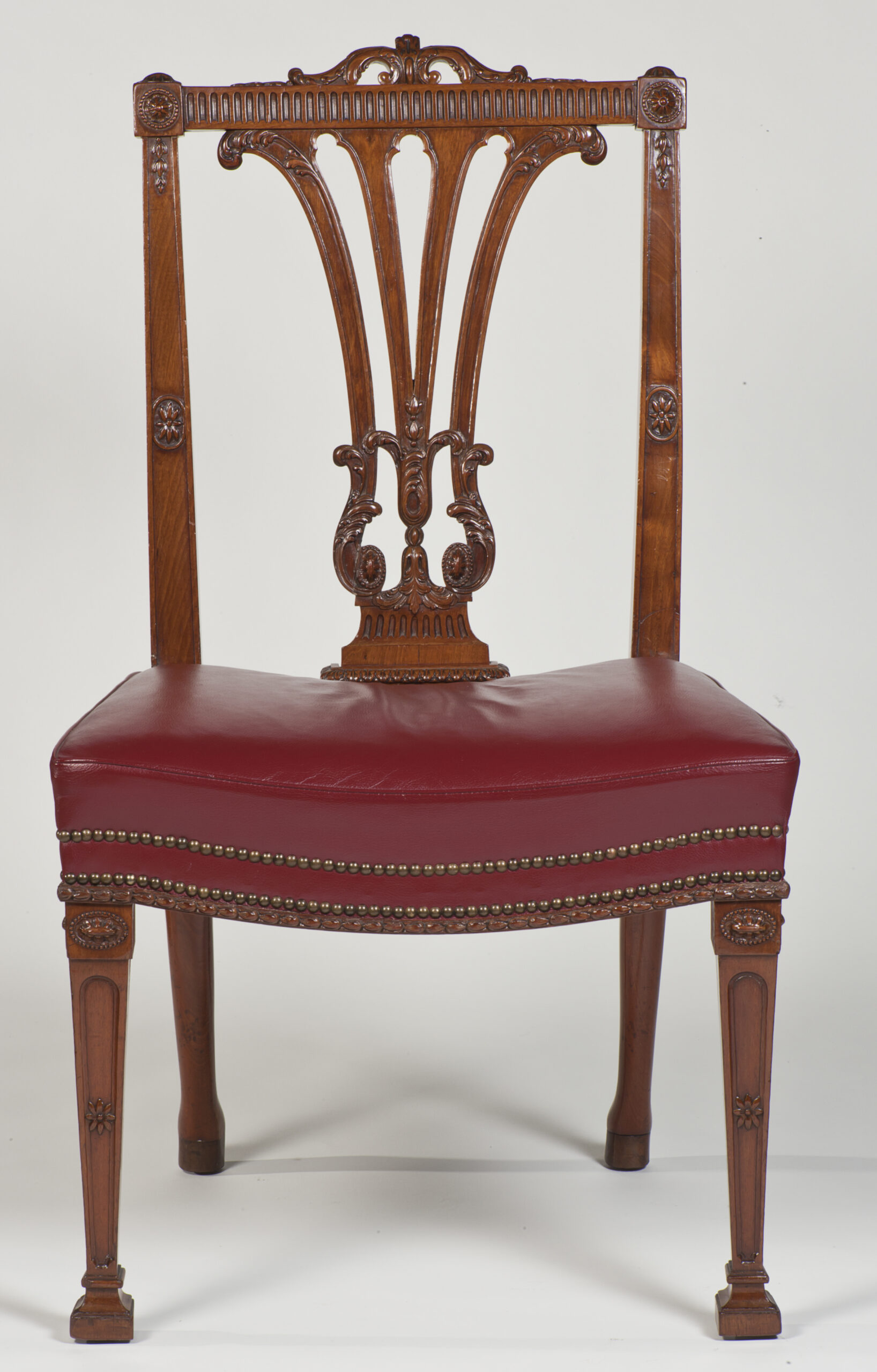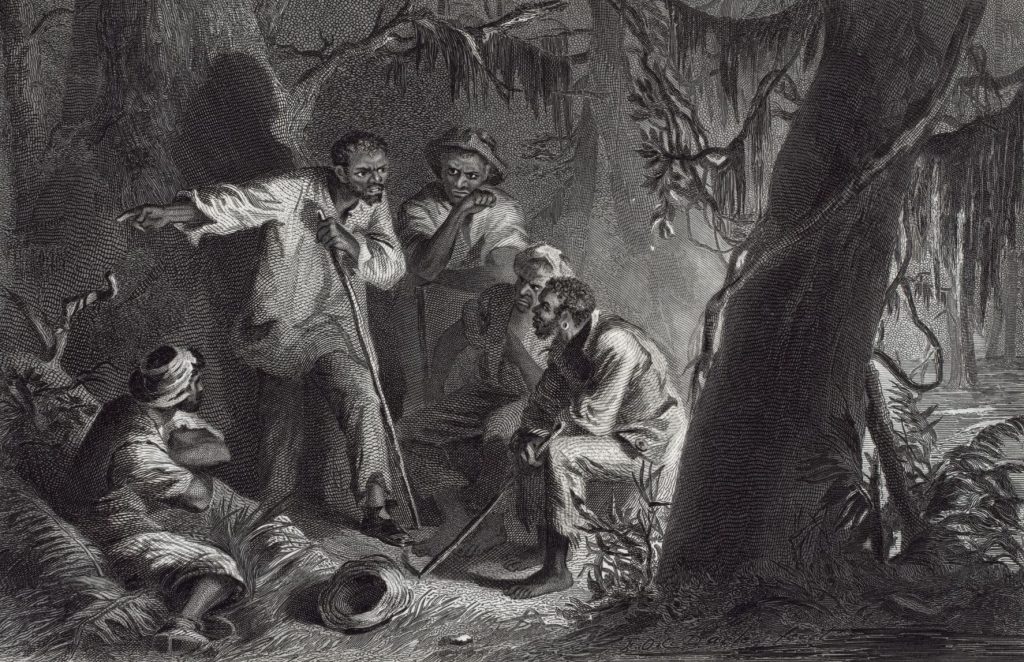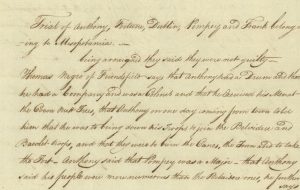Categories
23 December 2020
Cleaning The Chippendale Chairs
23 December 2020
Harewood’s Head Gardener Trevor Nicholson takes us through new processes and methods being implemented across the Gardens, as Harewood looks to the future and more sustainable ways of caring for its Gardens and Grounds.
As autumn gives way to winter, the Grounds and Gardens teams have been very busy, ably assisted by our loyal and enthusiastic band of volunteers. For the grounds team this means the removal of a huge quantity of fallen leaves from Harewood’s verdant lawns. The collected leaf litter is a valuable source of leaf mould for the gardens.
Having made the decision a few months earlier to change the way we grow our vegetables in the Walled Garden to something approaching the ‘no-dig’ system, every leaf – in fact, every scrap of green garden waste – has become significantly more precious to us as a renewable source of organic matter to be re-purposed as a growing medium.
Although we’ve been making compost for many years, the real difference is in the way we now apply it – and why. Call it what you will: ‘no dig’, ‘no till’, ‘reduced tillage’ etc, there are numerous labels; but they all mean pretty much the same thing: put away the spade and stop turning over and chopping up the garden soil year after year!
Regularly digging over and breaking up the soil impacts on the soil ecosystem by disturbing complex ‘food webs’ – interrelations between a multitude of soil organisms and mycorrhizal fungi, which live symbiotically with plants. Leaving the soil undisturbed and placing organic matter onto the surface not only prevents stored carbon from the soil being released into the atmosphere through digging, it also provides optimum conditions to enable the community of soil organisms to flourish.
The beneficial effect of these soil organisms includes increasing the fertility of the soil and improving its structure. One of the most important environmental benefits of adopting this method of surface ‘mulching’ is the retention of soil moisture, which not only saves water, but also reduces soil erosion and helps prevent the silting up of rivers and drainage systems.
Another added benefit to the gardener of applying organic matter to the soil as a surface ‘mulch’ is the control of weeds. This method need not be confined to the vegetable garden. We are experimenting in some areas of the Himalayan Garden with the use of waste cardboard re-purposed as a biodegradable ground cover, which is being placed between plants and topped off with sieved leaf mould.
The composting of our green garden waste and the recycling of biodegradable materials really underpins much of what we are doing in the gardens – now and in the future – as we set our focus on working in ever more sustainable ways and having environmentally considered methods at the forefront of our thinking.
28 October 2020
Object in Focus – Harewood’s Dining Room Chairs
28 October 2020
This chair, part of a set of 20, was made by Thomas Chippendale for the State Dining Room at Harewood House, delivered in around 1771. Its design represents the height of fashion in mid-late 18th century English dining furniture, with a neo-Classical frame decorated with carved ornament such as acanthus leaves, fluting and bell flowers. The seat is upholstered in leather, often utilised on dining furniture for its durability and practical qualities.
The frame of the chair is made of mahogany – a popular material used for furniture-making in England from the 1720s, highly prized for its naturally rich colouring, fine figuring (graining) and strength. Mahogany is particularly workable, allowing cabinet-makers to carve intricate designs into its surface, lending itself to the highly decorative cabinet-making tradition of the 18th century.
But the procurement of this versatile and beautiful material came at a human cost, and its history is intertwined with that of the transatlantic slave trade. Following the arrival of the first European colonists in the West Indies and Central Americas in the early 17th century, huge swathes of native timber was felled across the region. Initially this took place to clear land for sugar plantations, but the inevitable recognition of the remarkable qualities of mahogany generated an export market for the raw material itself.
The significant amount of labour needed to log mahogany trees came from enslaved Africans brought to the West Indies and Central America by European traders. It was dangerous and physically brutal work. Working in groups of between 10-50, enslaved woodcutters would embark upon forest expeditions to cut and log trees, clear roads and transport raw material back to coastal ports via rivers. A description of the logging process of Honduran mahogany written in 1873 by a British cabinet-maker paints a bleak picture of the working conditions for the individuals involved:
The labour of loading and driving, on account of the intense heat of the sun during the day, must be performed in the night-time, and by torch light…[T]he great number of oxen—the half naked drivers, each bearing a torch—the wildness of the forest scenery—the rattling of the chains, and cracking of the whips—and all of this at the hour of midnight, present…the sober industrial pursuit which has fallen to the lot of the wood-cutters of Honduras. (1)
There were also devastating ecological consequences to the extensive deforestation of the Caribbean region. As a direct result of large-scale sugar production and the systematic exploitation of slave labour, numerous West Indian islands experienced the swift extinction of mahogany and other native trees. Diverse forests were replaced by agricultural monocultures and microclimates that would go on to cause severe problems with drought and erosion.
When studying Harewood’s history and collection, it is important to consider and reflect upon the devastating socio-economic context that it was a product of. Despite their elegance, Harewood’s dining room chairs – as well as the many other pieces of mahogany furniture designed to sit alongside them – are inseparably linked to Britain’s merciless colonial past. To find out more about the building of Harewood House and its links to the slave trade, visit our Building Harewood digital guide.
(1) Thomson, The Cabinet-maker’s Assistant: A Series of Original Designs for Modern Furniture (London: Blackie and Son, 1873), 28-29.
28 August 2020
The Lascelles Slavery Archive
28 August 2020

3/11, Release and sale: Henry Frere to Edwin Lascelles, 1787. The image shows part of the schedule relating to a legal release and sale document between Henry Frere and Edwin Lascelles, detailing a list of enslaved people.
23 August marked the International Day for the Remembrance of the Slave Trade and its Abolition. Over the past week, we have shared a series of blogs written by local historians, researchers and artists to reflect on and explore what this means for Harewood and its wider communities.
Much of the historical research featured in these articles draws heavily upon the material contained within the Lascelles Slavery Archive held by the Borthwick Institute of Archives in York. This unique collection of documents provides the basis for much of our knowledge and understanding about Harewood’s links to the West Indies, documenting the Lascelles family’s involvement in the transatlantic slave trade during the 18th century.
The archive contains papers relating to the Lascelles family’s business transactions as sugar merchants and money lenders, such as accounts, administrative papers and correspondence with debtors. There are also many documents relating to the family’s plantations in Barbados, Jamaica, Tobago and Grenada, as well as the enslaved individuals in their possession. Due to the incredibly fragile and unstable condition of the documents, many of which had been exposed to poor historic storage conditions, a HLF funded conservation project took place in 2007 to ensure their long-term survival.
To facilitate the continuing research and analysis of this important chapter of Harewood’s history, a searchable catalogue of the Lascelles Slavery Archive has been made available online and all documents are available to view by appointment at the Borthwick Institute.
Click here to find out more about the Lascelles Slavery Archive. Please check the Borthwick Institute’s website for opening and access information.
23 August marked the International Day for the Remembrance of the Slave Trade and its Abolition. Harewood openly acknowledges its past, and to mark this anniversary we have commissioned a series of blog posts to explore what this means for Harewood and Leeds today.
In this blog, Olivia Wyatt – researcher and Harewood volunteer – challenges the ‘facts’ of the archive.
Image aboove Nat Turner and his confederates in conference’, 1831 published 1863. Whilst this image is not associated with the Tobago conspiracy (1801), it does convey the atmosphere surrounding it.
Power. Whiteness. Resistance. Challenging the ‘facts’ of the archive.
‘The report of the Committee,’ wrote John Robley, Lord Harewood’s attorney for Tobago, ‘I think your Lordship will find highly interesting & satisfactory’. This letter referred to a slave conspiracy in Tobago which was foiled in December 1801. One of the two principal conspirators, Anthony, belonged to the Lascelles-owned Mesopotamia plantation. The committee of which Robley wrote was convened to investigate the conspiracy, and they concluded that a few ‘artful’ individuals intended to lead intoxicated ‘ignorant negroes’ into open rebellion. Whether or not the rebels agreed with this summary of their conspiracy is a mystery; therefore how can we interpret the resistance of enslaved people when we can only conceive of it through the lens of their oppressor?
This is why Michel-Rolph Trouillot wrote of the need to analyse the power behind the process of historical production, which silences some narratives and empowers others. Those who are not considered ‘victors’ are often unable to present their perspectives in the historical material. This helps explain why Orlando Patterson advocated for historians to ‘stop defining slavery through the experiences of slaves’. Rather, slavery should be understood as a system of social death which attempted to use violence to alienate and dehumanise Black people for profit. Examinations of resistance are therefore, perhaps, as Vincent Brown posits, more useful than attempts to reconstruct the condition of slavery. The efforts of enslaved people to reshape their world reveal their politics, their dreams, and their dissatisfaction with their environment. Far from rendering enslaved people as docile and unfeeling, examinations of resistance could give them the voice they were denied. Nonetheless, this task becomes difficult when their resistance is presented through the mediums of their oppressors. I will therefore dissect one of the portrayals of Anthony in the archive, to show that there are ways to look beyond the oppressors’ attempts to further subordinate enslaved people through their control of the narrative.
Image of part of the Witness Statements from the Trial of Anthony, Fortune, Dublin, Pompey and Frank belonging to Mesopotamia (1802). Photograph taken by the author.
Nearly 200 Black people and some free-coloureds were arrested and interrogated, and Anthony pleaded not guilty during his trial. According to witness testimonies, the plan was to ‘put to Death all Whites’ but ‘preserve the White Women for their Wives’. This desire to form intimate and legal bonds with White women could suggest that the conspirators glorified Whiteness. The ‘negro’ embodied backwardness; a ‘heathenish’ and ‘dangerous kind of people’, according to the Barbados slave code. Not only was Blackness therefore presented as undesirable and inhuman; but, as Stuart Hall posited, Black people experienced themselves as the ‘Other’. Their being was in conflict with their inclination to conform to the norm and improve their standing through the main medium of power in the Caribbean: Whiteness. Whiteness became a tool of power for many Black people because it enabled them to escape the ‘trappings’ of Blackness. In order to elevate his status, as Frantz Fanon illustrated, the Black man dons a ‘white mask’ and ‘becomes whiter as he renounces his blackness, his jungle’. Marriage to a White woman would improve Anthony’s status, but in a society which was supposed to be rid of White people in order to ensure slavery’s demise, surely Whiteness would no longer possess such power? This could instead reveal how ingrained the desire for Whiteness was. It suggests that Anthony’s resistance to slavery was not necessarily resistance to White supremacy because it still positioned Whiteness as the ideal. Such beliefs fuelled the degradation of Blackness and upheld the racial hierarchy which governed the Caribbean; a hierarchy which, with its intersections with gender, positioned dark-skinned Black women at the bottom. The conspirators’ positioning of White women as the prize for their resistance demonstrates that when Black men resisted oppression, they did not necessarily resist for all.
Yet this is not the only interpretation which can be made. This supposed desire also capitalised on White men’s fears of Black men’s sexuality and the need to protect ‘their’ women and White purity. Could these witness testimonies therefore reflect these fears, instead of the conspirators’ internalised anti-Blackness? Torture and other extreme methods were undoubtedly used to extract information from the prisoners and, as K O Laurence admitted, this could make their accounts suspect. The governing council also declared martial law and the military conducted many of the interrogations. Indeed, the ruthlessness with which the Brigadier managed the situation encouraged the council to demand that the conspirators receive a trial. The objective to kill the White inhabitants often emerged in the testimonies, but the desire to save the White women appeared less so. This could indicate that this desire was confined to the principal conspirators, though it is also plausible that this was a dubious claim. Indeed, the other chief conspirator, Roger of Belvedere, questioned whether he ‘was present when this plan was settled’, presumably because it was unbeknownst to him. Given the conditions under which some witnesses were interrogated, the fact that Roger challenged this claim casts further doubt on the testimonies. If witnesses had been pressured to testify about a threat to White women, this would have further demonised the principal conspirators. Indeed, the council stressed their desire to make examples of only the leaders. The committee’s report was therefore characterised by disdain for the ‘manipulative’ conspirators who were ungrateful for the ‘luxuries of life’ which they had been granted as ‘principle people on the estates’.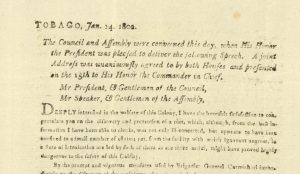
Speech by the President of the Council, 24 Jan 1802
We must therefore question the reliability of these testimonies and whether they suit the council’s pre-established agenda. As Saidiya Hartman has done, we must press at the limits of the archive and imagine what could have been in order to challenge what seemingly was. To speculate about which interpretation could be the ‘truth’ is to undermine what I set out to demonstrate. The multiple possibilities of one line in one source allow us to question the power behind the written word. We must also strategise how to exhibit this complexity within museums. The archive alone is not enough to represent marginalised people; though perhaps re-imagination, as evidenced by my second interpretation, is one way forward.
Olivia Wyatt, 2020


